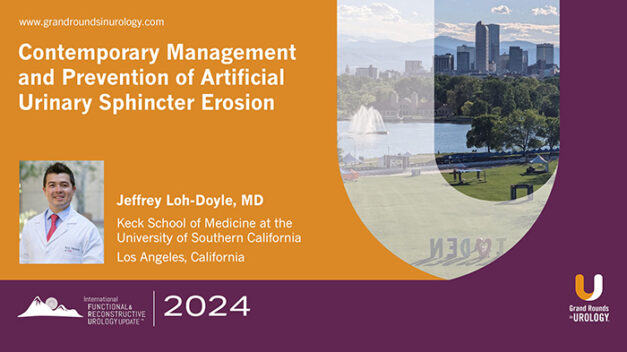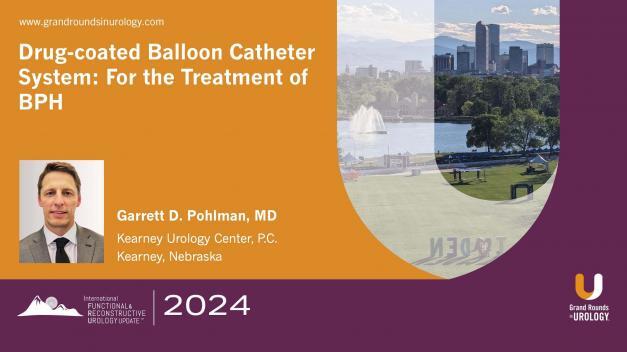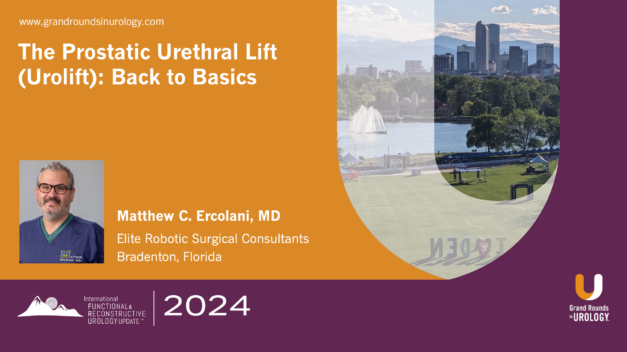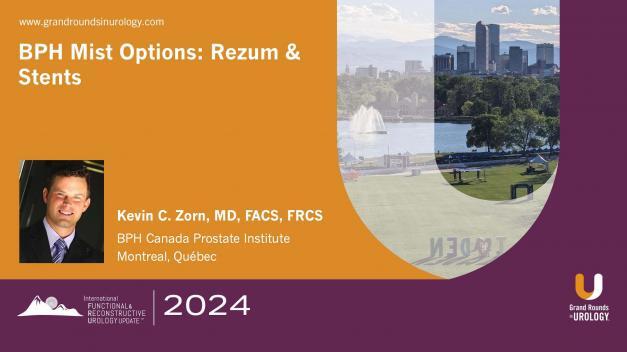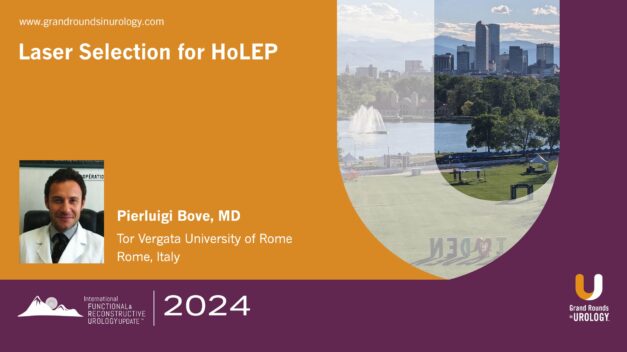Contemporary Management and Prevention of Artificial Urinary Sphincter Erosion
Jeffrey Loh-Doyle, MD, provides a detailed analysis of artificial urinary sphincter (AUS) erosion, focusing on its causes, risk factors, management, and prevention. In this 18-minute presentation, Dr. Loh-Doyle examines this complication of the gold standard treatment for moderate to severe male stress urinary incontinence.
Dr. Loh-Doyle stresses the importance of identifying and managing AUS erosion. Patients may present with symptoms such as worsening incontinence, perineal or scrotal swelling, or, in more subtle cases, no symptoms at all. Cystoscopy is necessary to confirm erosion, especially in cases of severe discomfort or urinary retention. He discusses treatment, which involves removing the AUS device, draining the bladder with a catheter, and, depending on the severity of the erosion, repairing the urethra.
Prevention is key, especially in high-risk patients. Loh-Doyle advocates for conservative management, including using lower-pressure balloons, delayed activation, and educating patients on deactivating the device to reduce compressive forces. He also shares that, while AUS is effective, repeated erosions increase the likelihood of poor outcomes.

